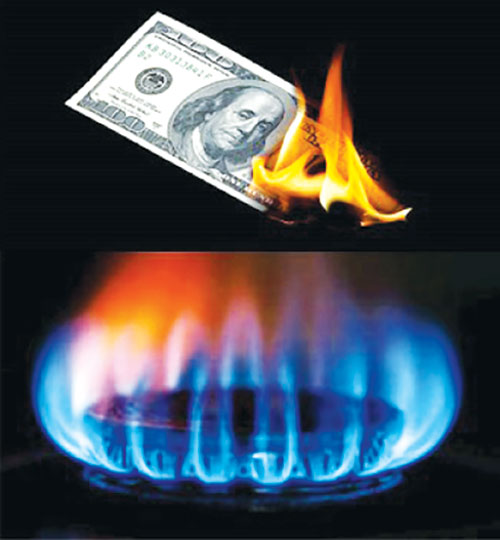Opinion
Why burn dollars to cook a meal ?

Time to think and find alternatives we can afford
A few days back I sent the head of a newspaper an article by Eng Parakrama Jayasinghe, former President of the Bio Energy Association, on the value of using charcoal as a substitute for LPG gas bought with borrowed Dollars. I told him that there was a national emergency at his doorstep with the queues outside waiting to get LPG into their kitchens.
While accepting this article he remarked
“Do you want us to go back to the Stone Age?”
I replied
“Certainly not. Many developed countries are resorting to charcoal and wood pellets as alternative fuel partly because of scarcity and partly because of the impending climate change demanding a cut back on fossil fuels. Sri Lanka has already introduced most acceptable models of cooking stoves to use wood and wood charcoal.”
To the credit of the publisher he gave middle page prominence to the article. He admitted that the public had to be familiarised with the problem and made conscious of the solution available to them off the shelf
Two and a half million families burning dollars
Two and a half million families in Sri Lanka, mostly in urban areas, have been converted to using LPG gas over a period of time. Consciously or not, they burn Dollars daily to cook their meals. The reality is that we have been hoodwinked to use LPG, with aggressive promotional work without letting out the fact that all LPG has to be imported, using the scarce foreign exchange.

With the increased world market prices and the high depreciation of the rupee, this picture has drastically changed for the worse in year 2022.
Sadly, the government appears to be hell bent on seeking means to import LPG at whatever cost, to assuage the demands of the people who were misled by the authorities themselves, to this unsustainable practice. It is indeed unfortunate that no one in the media were committed enough to take a stand and foster and encourage viable options.
Fortunately, the people realised that they had to find their own solution. Some may have had to accept the less than satisfactory option of using firewood in the traditional stoves and fireplaces, accepting the disadvantages of resulting smoke and soot, in their desperation. But some encouraging solutions too emerged through the natural inventiveness of the Sri Lankan people. This is the emergence of the multitude of stoves designed to burn charcoal or wood. Some of these stoves have proved to be exceptionally good and be a sound alternative to the unsustainable use of LPG.
The following points are worthy of note
The import of LPG is possible only through loans which will have to be paid by our children and grandchildren
Continued dependence on LPG is a never ending problem and will need more and more loans with no chance of the LPG leading to any foreign exchange earnings
The loans taken have to be paid by the entire country while the benefit is enjoyed by only a limited section of the society, which is morally unacceptable
For those fortunate to get even a cylinder of LPG, adopting the already available options of stoves using either charcoal or wood , for the cooking of the main meals , would substantially reduce the monthly expenditure. This would preserve the LPG cylinder bought with difficulty to be available for any usage in between and for any emergencies for many months
The consumers can be the drivers of the change which would reduce the demand for LPG and thus save the country millions of Dollars year after year
This would create a significant indigenous industry whereby the millions of Dollars sent out would flow to the local industrialists and rural communities supplying the charcoal and wood
These are indeed practical and worthwhile contributions to resolve a national problem. Are each of us ready to commit to extend the use of our LPG cylinder to last several months, thereby reducing the demand to 50% or even to 25% in the coming year? This should be considered a national duty by all of us.
Simultaneously, a practical programme of social reforestation has to be encouraged where the user of charcoal, plants wherever he can, trees to compensate for the charcoal he uses. In this way the next generation will also be assured of their own sustainable supply with absolutely no impct on the forest cover. A plant that can be recommended is Gliricidia Sepium which can be harvested in two years, and thereafter every eight months.
AH
Colombo